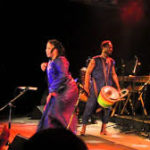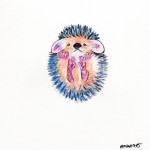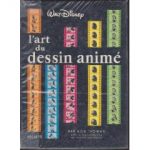Je l’ai reçu ce matin, maintenant y a du boulot pour chercher comment m’en servir au mieux dans MA musique. J’attend cette semaine ma pédale Vox Tonelab LE pour les simulations d’amplis, de ring, et de wha-wha.
Le Space echo original était dans le set de John Medeski (à ce qu’il paraît il ne l’a plus):
citation de http://emusician.com/mag/emusic_john_medeski/ :
“The Vintage Advantage
Medeski’s idea of making music better includes surrounding himself with an array of vintage electronic keyboards, effect pedals, and amplifiers. His main instruments are a Hammond B-3 organ, which goes through a Leslie 117; a Clavinet that goes through a wah-wah, a Roland Space Echo, and a 1953 Fender Bassman amp; a Wurlitzer that’s sent through a 1957 Fender Tremolux; a Mellotron that goes through a 1968 Fender Pro Silverface; an ARP String Ensemble; a Yamaha CS80 synthesizer; a Melodica, which is another Wurlitzer-type keyboard (“I don’t know what the exact name and model number are, but it’s somewhere between a Farfisa and an ARP,” says Medeski); and a Steinway piano. His only concession to modern times is the Moog Voyager, which he puts through a 1950s Kay 703 guitar amplifier.
FIG. 3: Medeski at his acoustic piano. Stacked on top is an ARP SE-IV String Ensemble and a Roland Space Echo.
“I’m more interested in an instrument that has one sound world rather than an instrument that has 1,000 sounds, but each type has its limitations,” explains Medeski. “And each of my keyboards has its own sound world. I think of them as different personalities, and that’s why they each have their own amplifier. I spend a lot of time finding amps that work. I really like the Wurlitzer sound that comes from its own speaker, but you can’t mic it live. Even in the studio it doesn’t have enough balls. But in the studio the Wurlitzer and the Mellotron can sound great direct to tape.””






Laisser un commentaire